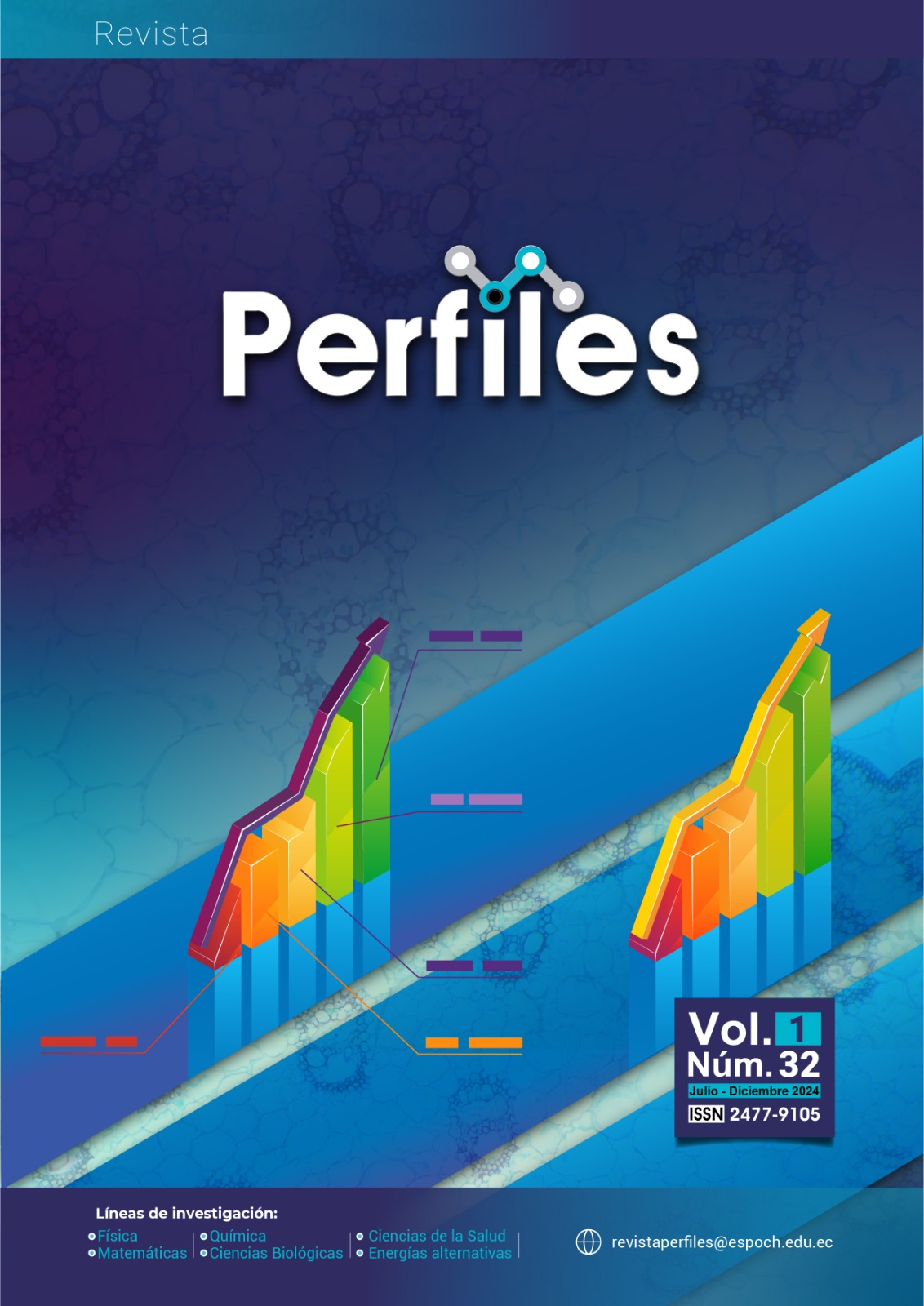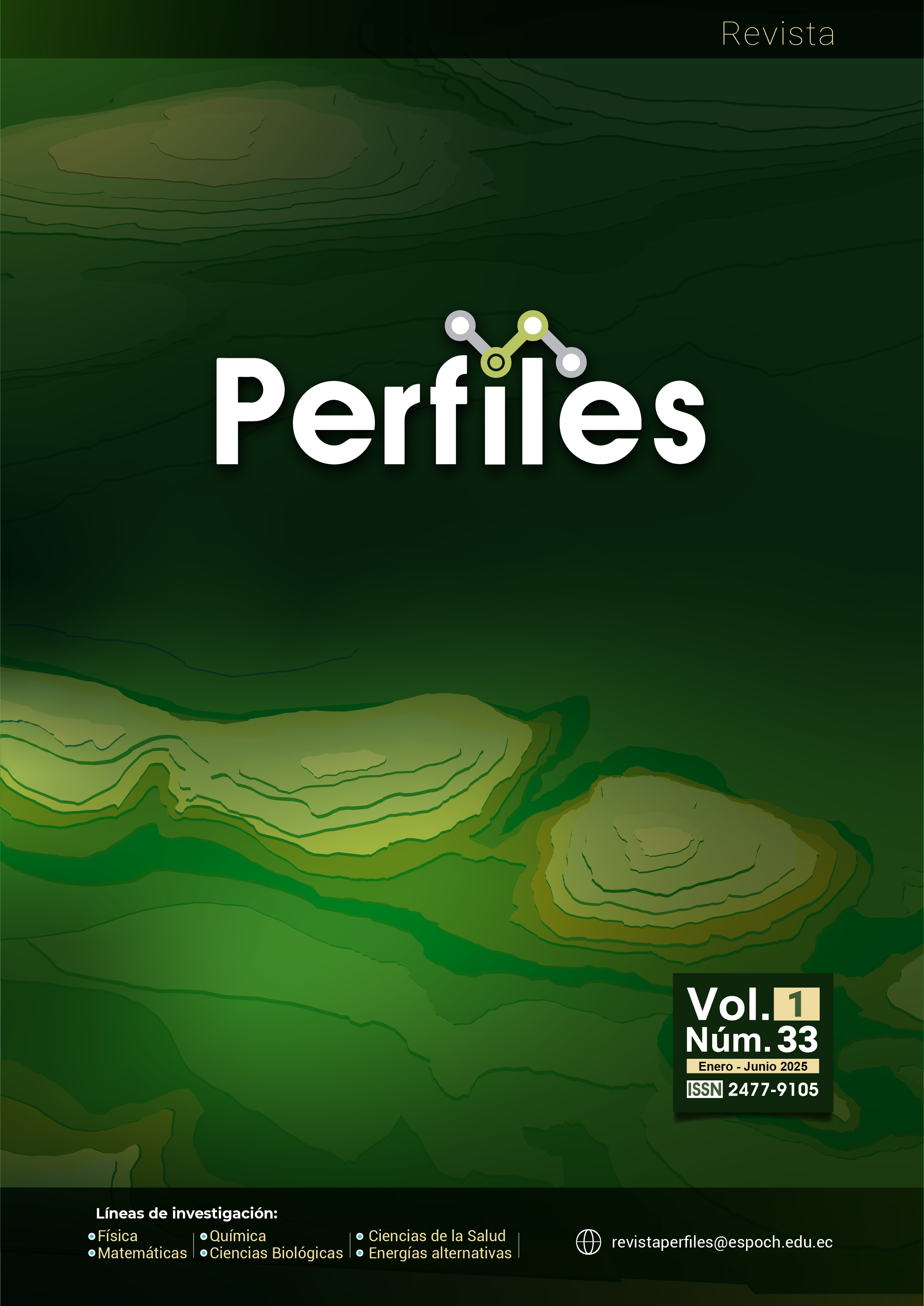Quantification of lead and cadmium in alimentary products by square wave anodic stripping voltammetry
DOI:
https://doi.org/10.47187/perf.v1i32.305Keywords:
Bismuth electrode, electrochemistry, determination, glassy carbon electrode, sample preparationAbstract
Towards the end of 2023, the Ecuadorian government through the Agencia Nacional de Regulación, Control y Vigilancia Sanitaria (ARSA), reported lead contamination of several groceries, including milk, flour, and cinnamon, as well as their derivatives. Several laboratories and regulatory institutions had to develop and apply accurate methods for lead determination in these kinds of matrices. Here, we present an easy, low-cost method to treat food samples in order to measure Pb2⁺ and Cd2⁺ concentrations for comparative, legal, and sanitary reasons. Metal determination was made using Square Wave Anodic Stripping Voltammetry (SWASV), employing a glassy carbon electrode coated with a bismuth film into acidic medium. Experimental parameters were obtained and then a calibration curve was built. A linear relationship between peak current and lead and cadmium concentration was found; a limit of detection of 2.15 and 1.65 μM was calculated for Pb2⁺ and Cd2⁺, respectively. An intercomparison assay was also made with Atomic Absorption Spectroscopy. Finally, this electrochemical method was employed for the determination of lead and cadmium in six different food samples.
Downloads
References
Cilliers L, Retief F. Lead Poisoning and the Downfall of Rome. In: Toxicology in Antiquity. Elsevier; 2019. p. 221–9.
Hernberg S. Lead poisoning in a historical perspective. Am J Ind Med. 2000 Sep;38(3):244–54.
Tenenbein M. Leaded gasoline abuse: the role of tetraethyl lead. Hum Exp Toxicol. 1997 Apr 2;16(4):217–22.
Duffus JH. ‘Heavy metals’ a meaningless term? (IUPAC Technical Report). Pure and Applied Chemistry. 2002 Jan 1;74(5):793–807.
Agencia Nacional de Regulación, Control y Vigilancia Sanitaria (ARCSA). Arcsa alerta sobre productos contaminados por altos niveles de plomo [Internet]. Quito: ARCSA; 2023 [cited 2024 Apr 23]. Available from: https://www.controlsanitario.gob.ec/arcsa-alerta-sobre-productos-contaminados-por-altos-niveles-de-plomo-actualizacion-de-alerta-emitida-el-06-11-2023/
Lorêdo de França M, Separovic L, Longo Junior LS, de Oliveira DC, Rebello Lourenço F, Calixto LA. Determining uncertainty in a simple UV–Vis spectrometry method employing dimethyl carbonate as green solvent for lead determination in water. Measurement. 2021 Mar;173:108581.
Hu Q, Yang G, Zhao Y, Yin J. Determination of copper, nickel, cobalt, silver, lead, cadmium, and mercury ions in water by solid-phase extraction and the RP-HPLC with UV-Vis detection. Anal Bioanal Chem. 2003 Mar 28;375(6):831–5.
Tahvonen R, Kumpulainen J. Lead and cadmium in some cereal products on the Finnish market 1990–91. Food Addit Contam. 1993 Mar;10(2):245–55.
Falandysz J. Comments on “Determination of mercury, cadmium, lead, zinc, selenium and iron by ICP-OES in mushroom samples from around thermal power plant in Muğla, Turkey”. Bull Environ Contam Toxicol. 2012 May;88(5):651–3. Available from: https://doi.org/10.1007/s00128-011-0357-1
Zen JM, Chung HH, Kumar AS. Determination of lead(II) on a copper/mercury-plated screen-printed electrode. Anal Chim Acta. 2000 Sep;421(2):189–97.
Švancara I, Prior C, Hočevar SB, Wang J. A Decade with Bismuth‐Based Electrodes in Electroanalysis. Electroanalysis. 2010 Jul 28;22(13):1405–20.
Wang J, Lu J, Hocevar SB, Farias PAM, Ogorevc B. Bismuth-Coated Carbon Electrodes for Anodic Stripping Voltammetry. Anal Chem. 2000 Jul 1;72(14):3218–22.
Carocci A, Rovito N, Sinicropi MS, Genchi G. Mercury toxicity and neurodegenerative effects. In: Luch A, editor. Molecular, clinical and environmental toxicology. Vol. 1, Molecular toxicology. Basel: Springer; 2014. p. 1–18.
Cevallos‐Morillo CA, Hernández‐Vargas SG, Aguilar‐Cordero JC. Electrochemical Formation of Nanostructured Gold Surfaces on Glassy Carbon for the Determination of Dopamine. Electroanalysis. 2018 Aug 15;30(8):1627–33.
Economou A. Bismuth-film electrodes: recent developments and potentialities for electroanalysis. TrAC Trends in Analytical Chemistry. 2005 Apr;24(4):334–40.
J. A, Faulkner LR. Electrochemical Methods. 2nd ed. Nashville, TN: John Wiley & Sons; 2000. 864 p.
Figueiredo-Filho LCS, Silva TA, Vicentini FC, Fatibello-Filho O. Simultaneous voltammetric determination of dopamine and epinephrine in human body fluid samples using a glassy carbon electrode modified with nickel oxide nanoparticles and carbon nanotubes within a dihexadecylphosphate film. Analyst. 2014;139(11):2842.
Kefala G. A study of bismuth-film electrodes for the detection of trace metals by anodic stripping voltammetry and their application to the determination of Pb and Zn in tapwater and human hair. Talanta. 2003 Dec 4;61(5):603–10.
HWANG G, HAN W, HONG S, PARK J, KANG S. Determination of trace amounts of lead and cadmium using a bismuth/glassy carbon composite electrode. Talanta. 2009 Feb 15;77(4):1432–6.
J. A, Faulkner LR, White HS. Electrochemical methods. 3rd ed. Nashville, TN: John Wiley & Sons; 2022. 1104 p.
Miller J, Miller JC. Estadistica y Quimiometria Para Quimica Analitica. Pearson Educacion; 2005.
Crouch S, Holler F, Skoog D. Principios de Analisis Instrumental. 2018. 888 p.
Clément Tonleu Temgoua R, Lesly Zambou Jiokeng S, Yemele Tajeu K, Deffo G, Averie Vomo L, Tonleu Dontsi F, et al. Perspective Chapter: Sample Preparation Techniques for Electrochemical Analysis of Pesticides and Heavy Metals in Environmental and Food Samples. In 2024.
Munoz RAA, Almeida ES, Angnes L. Sample Preparation Techniques for the Electrochemical Determination of Metals in Environmental and Food Samples. In: Reference Module in Chemistry, Molecular Sciences and Chemical Engineering. Elsevier; 2013.
Ghanjaoui MEA, Srij M, El Rhazi M. Assessment of Lead and Cadmium in Canned Foods by Square-Wave Anodic Stripping Voltammetry. Anal Lett. 2009 Jun 5;42(9):1294–309.
World Health Organization (WHO). Evaluation of certain food additives and contaminants [Internet]. WHO Technical Report Series. Geneva: World Health Organization; 2000 [cited 2024 Apr 24]. Available from: https://www.who.int/publications/i/item/9241208961
Scientific Opinion on Lead in Food. EFSA Journal [Internet]. 2010 Apr [cited 2024 Apr 24];8:1570. Available from: https://www.efsa.europa.eu/en/efsajournal/pub/1570#meta-data
Published
How to Cite
Issue
Section
License

This work is licensed under a Creative Commons Attribution-NonCommercial 4.0 International License.


























